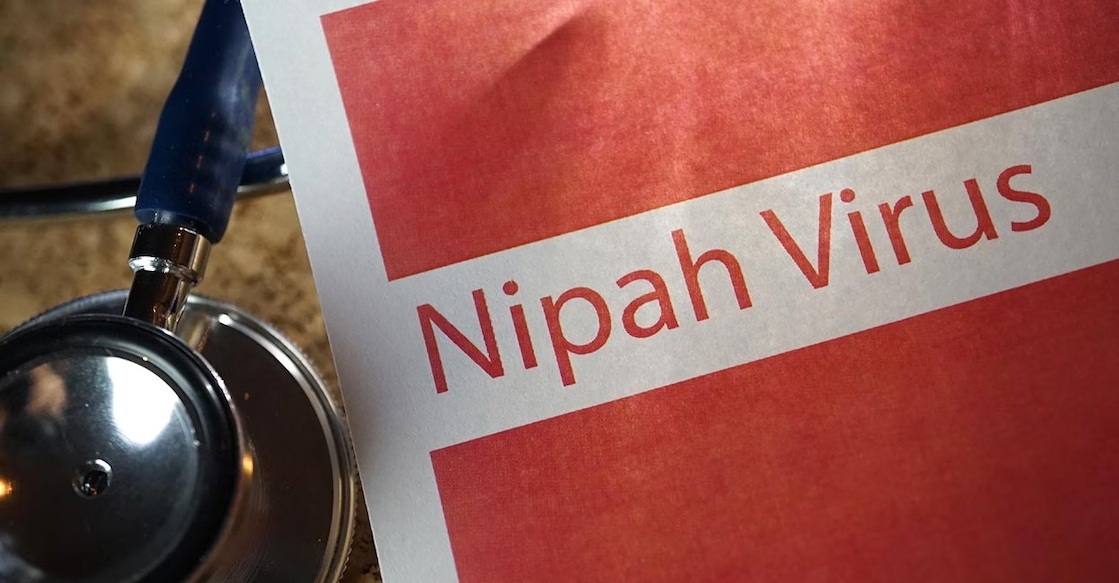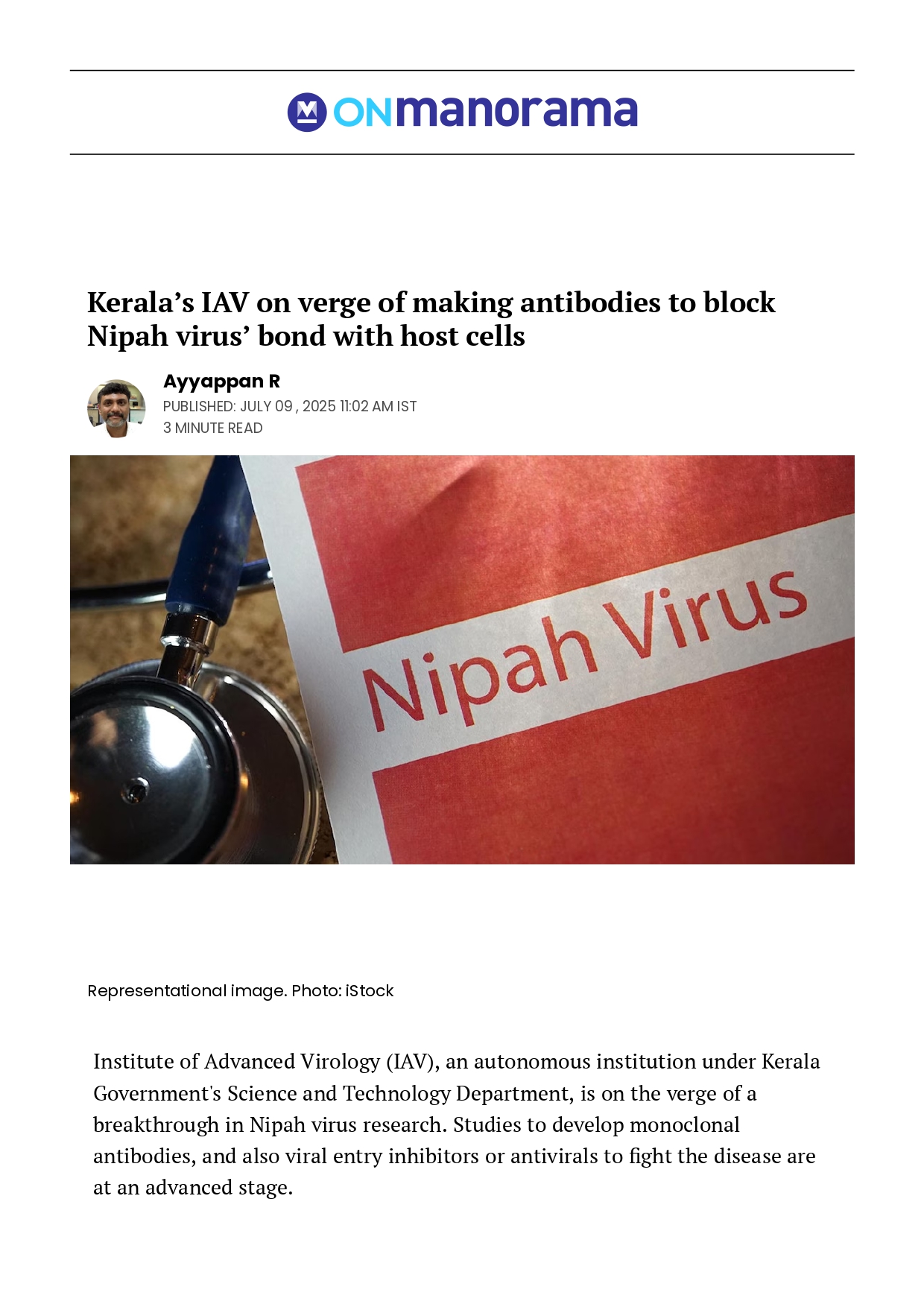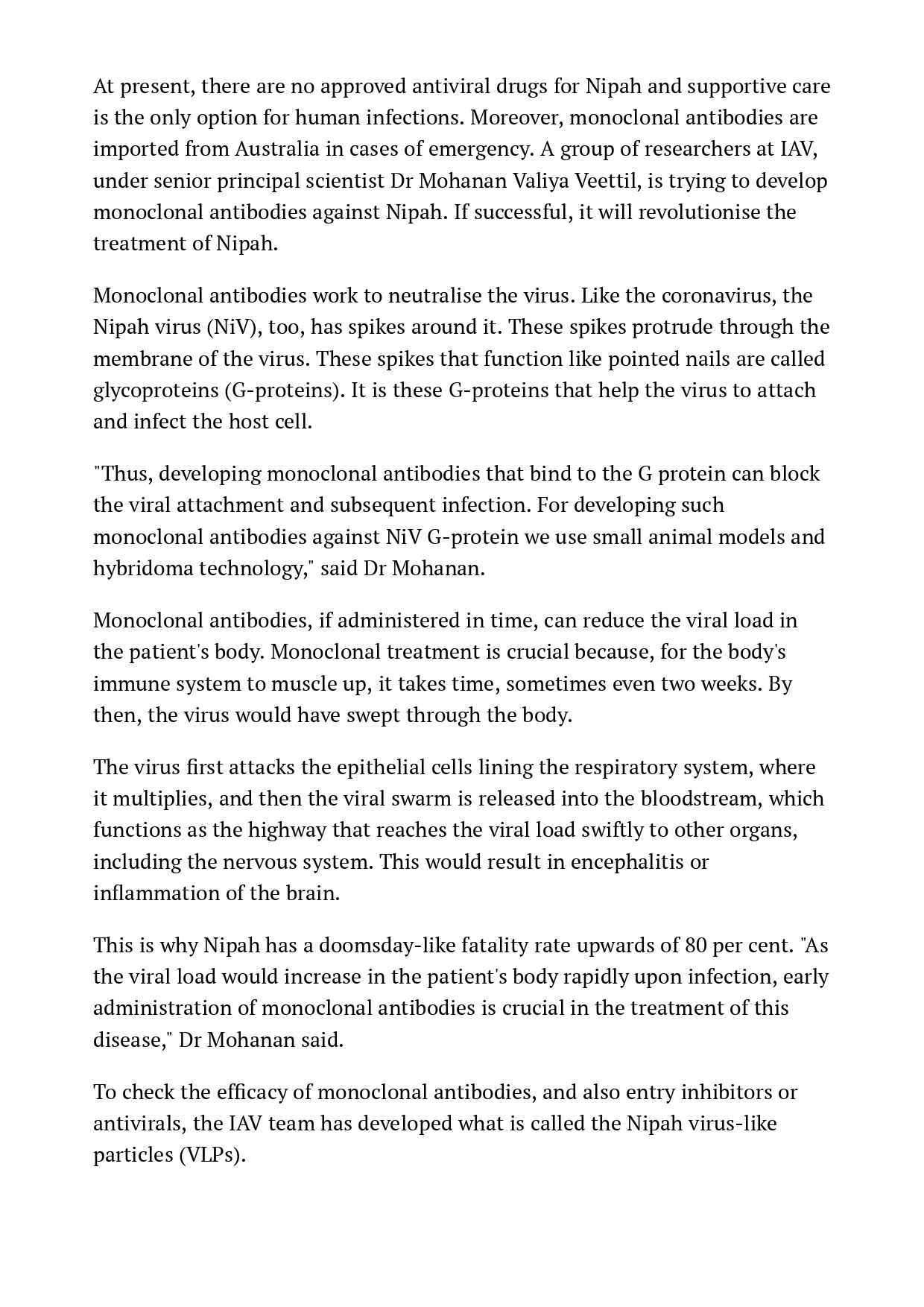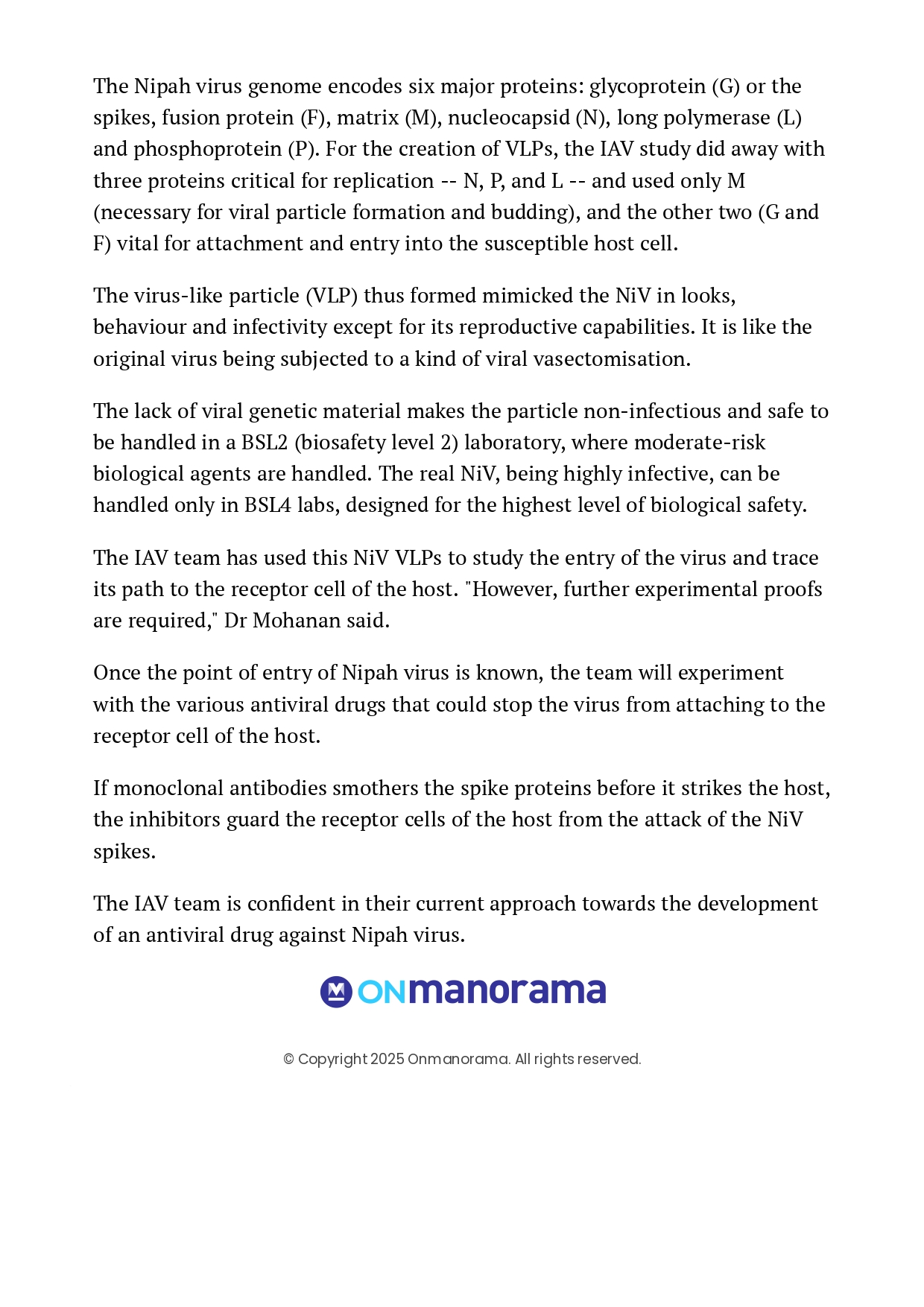Representational image. Photo: iStock
July 9, 2025 – The Institute of Advanced Virology (IAV), an autonomous institution under the Kerala Government's Science and Technology Department, is on the cusp of a significant breakthrough in Nipah virus research. Groundbreaking studies aimed at developing both monoclonal antibodies and viral entry inhibitors (antivirals) to combat the deadly Nipah virus (NiV) are currently in advanced stages.
Currently, there are no approved antiviral drugs for Nipah, making supportive care the only treatment option. Monoclonal antibodies, when needed, are typically imported from Australia. However, a dedicated team of IAV researchers, led by Senior Principal Scientist Dr. Mohanan Valiya Veettil, is working to develop indigenous monoclonal antibodies against Nipah.
Dr. Mohanan explains that Nipah, like coronavirus, uses spike proteins (glycoproteins or G-proteins) to attach to and infect host cells. The IAV team is developing monoclonal antibodies designed to bind to these G-proteins, thereby blocking viral attachment and subsequent infection. Early administration of these antibodies could significantly reduce the viral load in patients, which is critical given Nipah's high fatality rate.
To test the efficacy of these potential treatments, the IAV team has developed innovative Nipah virus-like particles (VLPs). These VLPs mimic the Nipah virus in appearance and behavior but lack the genetic material necessary for replication, making them non-infectious and safe to handle in Biosafety Level 2 (BSL2) laboratories. This allows researchers to safely study how the virus enters host cells.
Once the precise entry mechanism of the Nipah virus is fully understood, the team plans to test various antiviral drugs that could prevent the virus from attaching to receptor cells.
The IAV team expresses strong confidence in their current research trajectory towards developing an effective antiviral drug against the Nipah virus, promising a potential revolution in treatment strategies.
An article in this regard was published in ONMANORAMA which is appended herewith for detailed reading.




